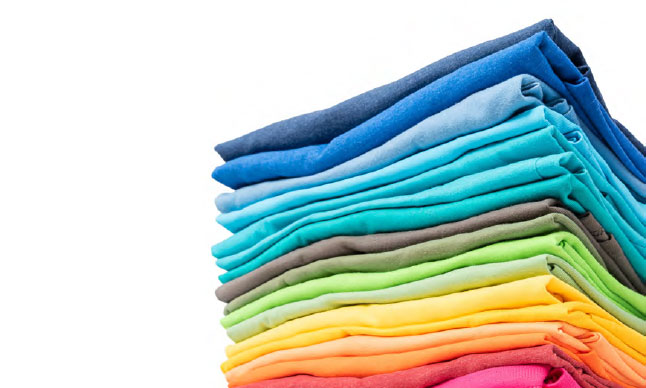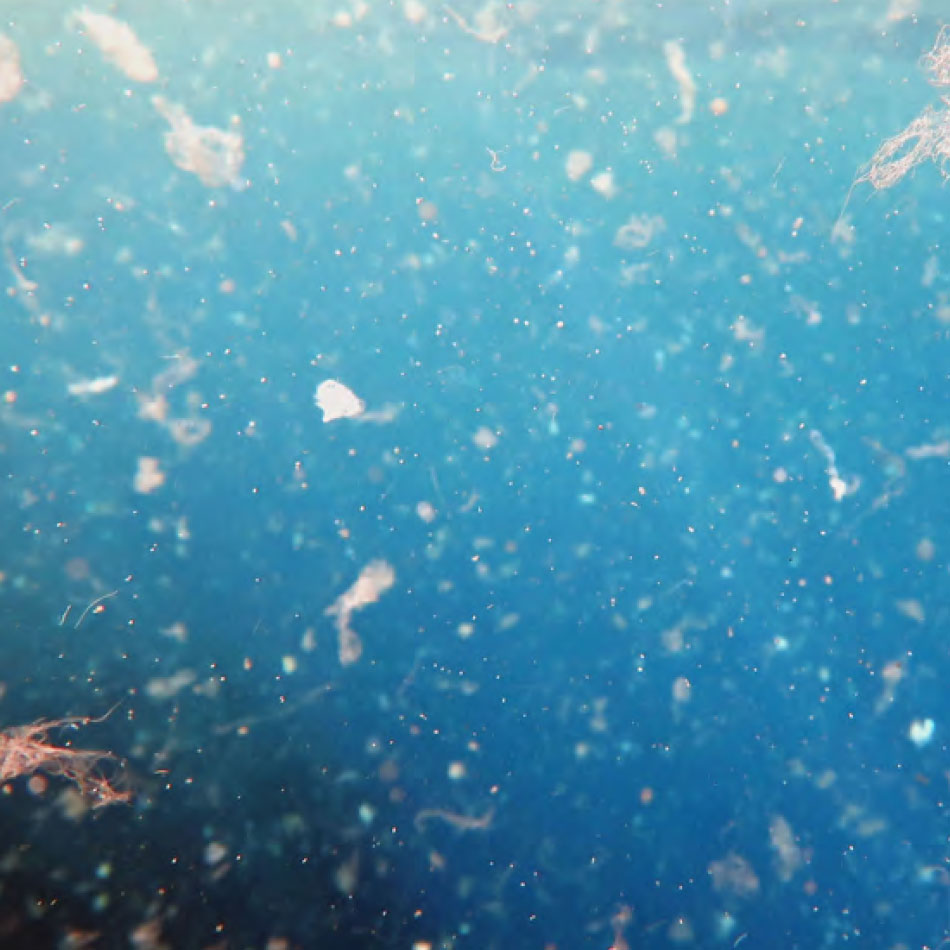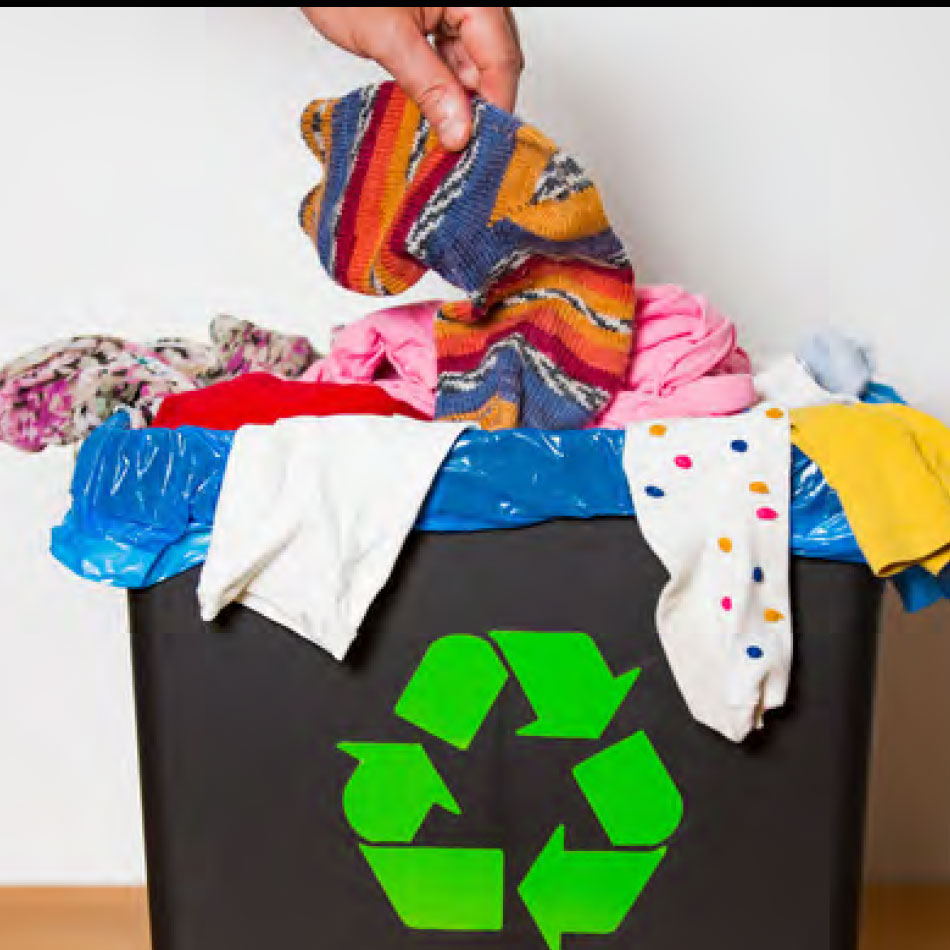From Closet to Coast
Check to see if your dirty laundry is adding microplastics to the environment with this informative activity.
- All
- Puzzles + Games

What you’ll need:
- Some of your own clothes
- Space on a table or the floor
- Two blankets or towels (optional)

Activity setup:
- Gather several different items of clothing. Try to find a T-shirt, denim jeans, yoga pants, a sports jersey and a silk scarf or handkerchief. If you don’t have one of these items, don’t worry—just grab any clothes you have on hand. (Tip: This is an excellent game to play while folding laundry!)
- Make room on your floor or table for three piles of clothes.
How to play:
- This game is about guessing what type of material your clothing is made from. Some clothing is made from synthetic fibres, which are a type of plastic. Other clothing is made from natural fibres like cotton. Finally, some items use both synthetic and natural materials.
- You will be sorting each item into one of three categories: Synthetic, Natural and Both. Start by choosing a spot for each pile. You can create labels or use something you have at home, like a couple of rolled-up blankets or towels, to create barriers between the piles.
- Once you have your piles set up, it’s time to start sorting your clothes! Guess what each item is made from, then place it in the corresponding pile. Do you think your running shoes are made of plastic? What about your T-shirt or jeans? Which pile is the tallest?
- After you have sorted everything, take a look at the answer key to learn more about what your clothes are made of.

What are microplastics?
You have probably noticed plastic pollution before, especially in and around large bodies of water like lakes and oceans. But did you know that there is even more plastic in the water that you can’t see? Our waters are full of microplastics: tiny pieces of plastic that come from everyday items like food containers, bags and even clothing. That’s right—many of our clothes are made from plastic materials, such as polyester, nylon and acrylic. When synthetic clothing is washed, it sheds microscopic plastic fibres. These microplastics move from our laundry machines to a wastewater treatment plant before finally making their way into a lake or ocean. From there, microplastics are often mistaken for food by hungry fish and other animals. This can be harmful, as plastics absorb chemicals and other dangerous substances in the water.
What can you do to help?
When it comes to microplastics, there is lots you can do to protect wildlife and the environment. Awareness is an excellent first step—in other words, you’re off to a great start!
You can also practice the three Rs:
- Reduce—Try not to buy any clothing you don’t need!
- Reuse—Buy items secondhand, embrace hand-me-downs and trade clothing whenever you can.
- Recycle—Get creative with your old clothing. Think about how you can repair or repurpose old items.
When you need to buy something new, try to pick items made with natural materials. Read labels and stay informed!

Answer key
Denim jeans (Natural)
Denim is made from cotton, a natural material. Not only are denim jeans practical and stylish, but they’re also good for the environment. Time to put those old blue jeans on!
Silk scarf or handkerchief (Natural)
Silk is a natural protein fibre made from the cocoons of certain insect larvae, most often the Bombyx mori. This material is cool, smooth and most importantly, biodegradable.
Sports jersey (Synthetic)
Jerseys and other athletic wear are mostly made of polyester, which is a form of plastic. Though this material is great for wicking sweat, it’s not very good for the environment.
Running shoes (Synthetic)
It probably won’t surprise you to learn that your running shoes are made mostly with plastics. In fact, around 50% of all footwear is made of plastic. This material makes for a light, strong and comfortable shoe that is also durable. Although running shoes are difficult to recycle, they can be ground up and used for play surfaces or tracks.
Yoga pants (Synthetic)
Check the tag on your yoga pants and you’ll probably find they’re made of some combination of polyester, nylon and elastane. Elastane is especially useful for form-fitting athletic wear, as it’s stretchy and has good shape recovery. All three of these materials are a form of plastic.
T-Shirt (Both)
Like other inexpensive garments, T-shirts are usually made from a blend of cotton and polyester. If you have a T-shirts made with 100% cotton, it is completely biodegradable.
More information about materials
To learn about clothing items not included in the Answer Key, check out the labels on those items. Are most of your clothes made of natural materials, synthetic materials or a blend of both?
Common natural materials, which are biodegradable, include:
- Cotton
- Silk
- Linen
- Wool
Common synthetic materials, which cause microplastic pollution, include:
- Polyester
- Nylon
- Acrylic
- Spandex